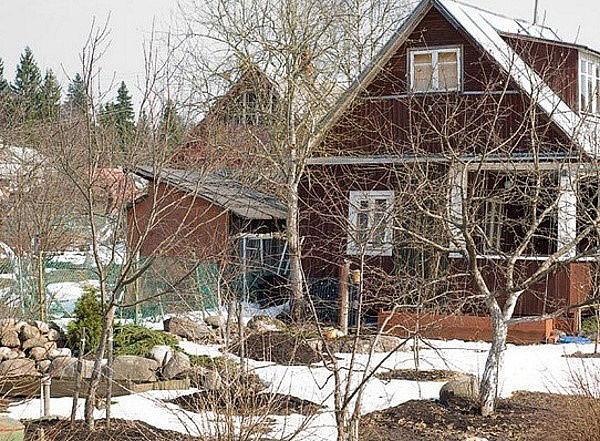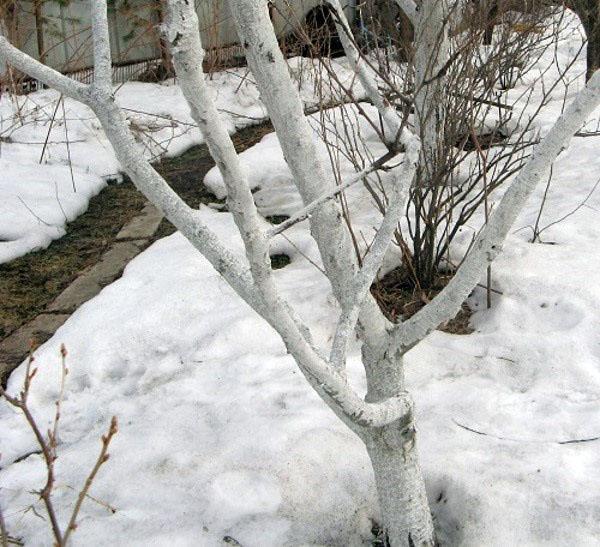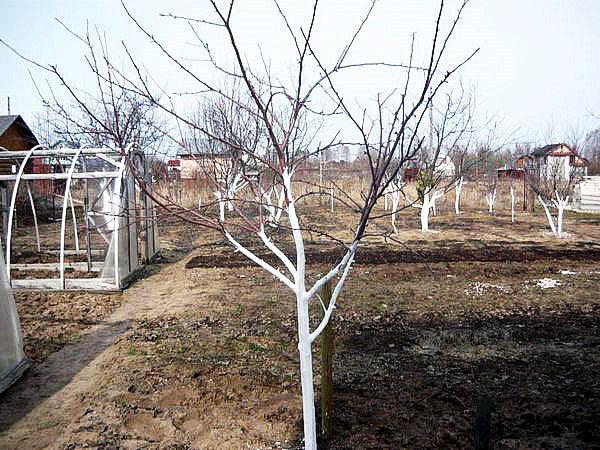It smelled of spring or the March chores of a summer resident in the garden
 It is still cold outside, frost at night, or even during the day, it crackles with displeasure, not wanting to retreat, and there is still a white snow cover on the ground, but the first spring sun fervently looks through the window and calls out summer residents who have rested over the winter. And indeed, it is enough to sit in a warm and cozy armchair, because the real spring is not far off and in March there is plenty of hassle for household summer residents in the garden. So where do we start?
It is still cold outside, frost at night, or even during the day, it crackles with displeasure, not wanting to retreat, and there is still a white snow cover on the ground, but the first spring sun fervently looks through the window and calls out summer residents who have rested over the winter. And indeed, it is enough to sit in a warm and cozy armchair, because the real spring is not far off and in March there is plenty of hassle for household summer residents in the garden. So where do we start?
Snowy garden chores

If spring is early and warm in your area, and at the beginning of March, instead of snow, the first young grass flaunts on the ground, just skip this point and move on to the next chapter. Not everyone is so lucky to live in a southern climate.
What do we do with the snow? Armed with a long stick and a shovel (why the latter, you will find out later), we go to the garden and begin to bully:
- With a stick we knock snow hats from trees, especially from young ones - under its weight, flexible and frozen branches often break.
- We transfer the fallen snow with a shovel (which came in handy) to the beds with strawberries, in the raspberry grove, and also lay it out in the trunk circle under the trees. It will suspend the thawing of the root system, which will help protect roots and twigs, in which sap flow may begin early, from recurrent frosts.
- We also add snow to the beds with cuttings and scions dug in from autumn. Pour sawdust on top of the snow to slow down the melting of the snow cover.
- We look into the low-lying side of the garden, where there is drainage, and we clear the structure, at the same time removing snow from this area, until it melts and adds excess moisture.
- But if there is a site with a strong slope, on the contrary, we demolish all the remaining snow and make a semblance of a shaft horizontally across the square. Such a snow barrier will prevent the rapid drainage of moisture and help the earth to be saturated with it.
Cooking cuttings
If in the autumn bustle there was not enough time to prepare cuttings, you can do this in March. Right there, in the garden, we "bury" them under a snow blanket and cover them with sawdust.
Spring harvesting of cuttings should not be done if the frosts in winter were below 25 degrees.
Protecting trees from spring burns
 The most important event among the March garden troubles of a summer resident is spring whitewashing of trees... Most of us look forward to warmer days and postpone it to the end of April, so that before the Easter holidays, the garden shines with snow-white trunks. However, this should not be done, since by that time the whitewashing will be purely aesthetic, so for beauty. It was in the first days of March, until the temperature swing began (during the day - plus, at night - minus), it is necessary to protect trees from sunlight and future burns and frost breaks.
The most important event among the March garden troubles of a summer resident is spring whitewashing of trees... Most of us look forward to warmer days and postpone it to the end of April, so that before the Easter holidays, the garden shines with snow-white trunks. However, this should not be done, since by that time the whitewashing will be purely aesthetic, so for beauty. It was in the first days of March, until the temperature swing began (during the day - plus, at night - minus), it is necessary to protect trees from sunlight and future burns and frost breaks.
So we choose a quiet, warm and windless day, arm ourselves with a brush and a bucket of lime and run into the garden until it gets cold again. By the way, if you don't feel like messing around with lime slaking, special paint for this business is sold in gardening centers or shops.
Do not forget to look at the flower bed to coniferous crops like thuja and juniper - they are one of the first to suffer from the sun.It is not necessary to whitewash them, but it will not hurt to cover them with non-woven material for a while.

Getting started with a spring haircut
 Closer to mid-March, when the daily temperature is above zero, we take a sharp pruner and a large knife and set off to inspect our garden possessions, namely:
Closer to mid-March, when the daily temperature is above zero, we take a sharp pruner and a large knife and set off to inspect our garden possessions, namely:
- we clean the frost holes formed on the trunks during the winter to living tissue;
- we cut off frozen and broken branches on trees, as well as those that grow inside the crown or intersect with each other;
- we cut out old shoots on gooseberries and currants;
- if the raspberries were not cut off in the fall, we also manage the raspberries, removing the shoots that have borne fruit, and shortening the young branches;
- we also look at ornamental shrubs to carry out sanitary pruning.

We do not forget to cover all the cleaned wounds on the trees and the hemp from the cut branches with garden pitch. We additionally process the wounds before applying copper sulfate.
Preparing to attack pests and diseases
 When winter finally leaves, and the spring sun warms up the air to at least 5 degrees Celsius, you can start prophylactic spraying - another important event among the gardener's troubles in March. Trees are treated with insecticides and means for the prevention of diseases, and shrubs and berry beds (strawberries) - just with hot water.
When winter finally leaves, and the spring sun warms up the air to at least 5 degrees Celsius, you can start prophylactic spraying - another important event among the gardener's troubles in March. Trees are treated with insecticides and means for the prevention of diseases, and shrubs and berry beds (strawberries) - just with hot water.
In addition to spraying, it is worth applying other methods of protection against various pests:
- we lay out the pickled grain for mice in the garden (but so that the birds do not peck it);
- we put on trapping belts on tree trunks;
- We hang a couple of birdhouses to attract the garden attendant birds.

For a small garden of up to 10 acres, two houses are enough. Larger estates urgently require more birdhouses to tinker (here is another lesson for the summer resident in March).
At the end of the March chores of the summer resident in the garden at the end of the month, we feed all the plantings nitrogen fertilizersso that they grow faster. And one more thing: if full spring has come in your area, we open the grapes sheltered for the winter and go with a clear conscience to rest until April. And then, with renewed vigor, we will again continue the difficult, but pleasant and bringing tasty and useful results, the work of the summer resident.
Hello! You propose to hang birdhouses in the garden, and even without this, the birds peck almost all the small harvest of cherries and cherries. Protecting the trees with nets is inconvenient, since the berries are far from ripening at the same time, and the nets will have to be reinstalled every three to four days. If you use scarers, then hardly anyone will settle in birdhouses.